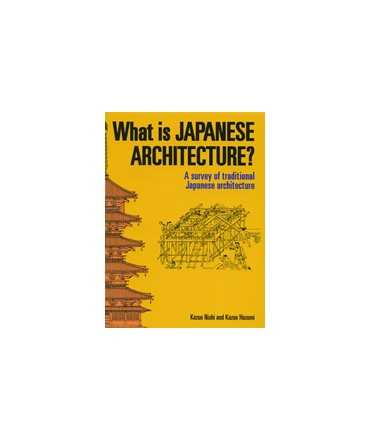93 224 39 32 / 91 133 85 02 info@lacapell.com
Producte afegit amb èxit a la teva cistella de la compra
Quantitat
Total
Hi ha 0 articles a la cistella Hi ha 1 article a la cistella
Total productes
Enviament total A determinar
Total
Seguir comprant Anar a la caixa
- Menú
- Ofertes
- Botigues
- Papereria
- Llibreria
- Espais
- Gourmet
- Urban
- Jocs
- Singulars
- Informàtica
- Agenda
Producte afegit amb èxit a la teva cistella de la compra
Quantitat
Total
Hi ha 0 articles a la cistella Hi ha 1 article a la cistella
Total productes
Enviament total A determinar
Total
Seguir comprant Anar a la caixa
- Menú
- Ofertes
- Botigues
- Papereria
- Llibreria
- Espais
- Gourmet
- Urban
- Jocs
- Singulars
- Informàtica
- Agenda
What is JAPANESE ARCHITECTURE?
Traditional Japanese architecture-whether Buddhist temples or Shinto shrines, residences, castles, or teahouses-has become increasingly familiar around the world. Through the media of motion pictures, art books, T.V. documentaries and dramas such as Shogun, as well as through personal experience, more and more people have gained an acquaintance and appreciation of the architecture of premodern Japan. Some may even be able to name or recognize the oldest and the largest wooden structures in existence, which are to be found in Japan at Horyuji and Todaiji respectively. Yet often this knowledge is still rudimentary. Confusion abounds as to what distinguishes Japanese architecture from Chinese or Korean, or even Southeast Asian, not to mention what sets off a Buddhist temple from a Shinto shrine or, say, a residence of the tenth century from one of the eighteenth. 144 p: fot, il, b / n, i plantes seccions, 25,7 x 18,5 cm, tapa rústica amb solapes ....
0000070017
| Autor | Nish |
Enviament en 24-48 hores, dies laborables
Devolucions en 30 dies
Tens dubtes? Tlf. 93 224 39 32


